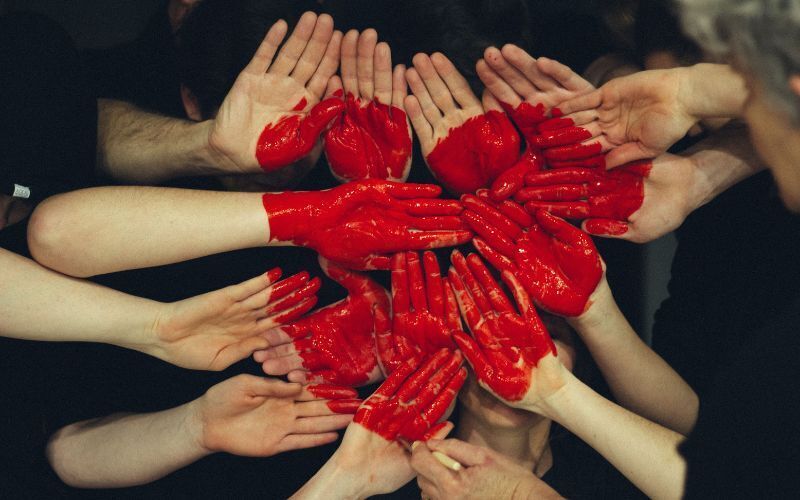Photo by Tim Marshall on Unsplash
Date: February 12
Join the campaign
Children are involved in numerous armed conflicts all over the world. Recent examples are Afghanistan, Chad, Central African Republic, Colombia, the Democratic Republic of the Congo (DRC), India, Iraq, Israel / Palestine, Myanmar (Burma), Pakistan, Philippines, Somalia, South Sudan, Sudan, Syria, Thailand and Yemen. Young soldiers' lives are often full of dangers and characterized by hard work, lack of food and drinking water. There is no health care but constant fear of being trapped in an ambush, landmine or gunfire. Discipline and obedience are enforced by brutal methods. Many children die under inhuman circumstances, others survive handicapped, blind or traumatized for the rest of their lives. However, boys are not the only ones at risk. Approximately one third of child soldiers are girls. They have to carry out the same tasks as the boys but, in addition, they are frequently subjects of sexual violence and are forced to be the commanders' "wives" or sex slaves. As a consequence many are infected with HIV/AIDS or other sexually transmitted diseases and a lot of them become pregnant. In some cases they are stigmatized and have to live with their babies under extreme conditions.
Their suffering is not over once these young people return home. Some discover that their families have been killed or their homes are destroyed. There is hardly a chance of finding a job or to return to school, and crime or prostitution seem to be the only alternatives. Many have to cope with physical disabilities. Communities may find it difficult to accept these former child soldiers, and the adolescents may reject community rules and traditions. Communities, families and former child soldiers need financial support and assistance to re-establish social structures and create opportunities to rebuild their lives.
On 12 February 2002 the optional protocol came into force and it outlaws the enforced recruitment and use of children and adolescents under 18 in armed conflicts. This optional protocol has been accepted by more than 150 governments. Armed groups and even regular government forces, however, continue to recruit and use child soldiers. Many of them have been recruited by force and cannot leave the armed unit anymore. While the majority of child soldiers is between 15 and 18-year-old, in some wars even 9-year-olds have been drafted. Other children grow up in war zones and thus have little chance of survival if they do not join one of the armed groups "voluntarily".
How to Participate
The action is very easy to implement, whether at school, in the cities we live in, or through social media. The more people everywhere take part, the more attention we can get for the topic of child soldiers. The international Red Hand Day is on February 12th, but you can also do the action on any other day of the year. However, the closer it is to the official date, the better individual actions can be networked and made visible.
Bring Red Hand Day to social media
Color your hand with red finger paint or use the appropriate tools on our action page and post a photo on Instagram, Facebook or Twitter with the hashtag #redhandday and your claim or wish. Ask your friends* to join the action. Our voices can only be heard if many join in. Here you can find a video and other materials about Red Hand Daywww.tdh.de/redhandday
Bring Red Hand Day to the streets
Do you also like to be on the road offline and have fellow campaigners for a street action? If you want to activate as many people as possible to take part, then it is best to choose a busy place for the action, for example the pedestrian zone, school canteen or city festival. There are no limits for your ideas. Most important is the red, washable finger paint. For this you need white paper for hand prints, a clothesline, staples to hang up the prints, water or damp cloths, covering materials - and of course flyers, posters and other information on the topic. Depending on the location, you may also need a table, shelf or something similar to present the materials.
Everyone should know what you are doing. This works best when the press reports about you and the campaign. Contact the local newspaper, radio stations, community magazines etc. Write a press release with all relevant information (who, what, when, where and why). You can get a sample press release from terre des hommes(https://www.tdh.ch/en). Invite politicians to participate in the campaign.
Very important: Document and post articles and photos about the campaign in the social media channels and use the hashtag #redhandday. If there are also well-known personalities involved who can be linked, this will of course attract even more attention.


